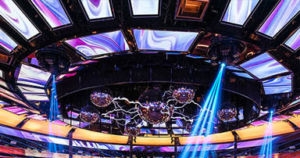Large-format digital displays have never been things to simply unbox and hang on the wall, but for decades this was how many manufacturers did business. Under that model, the sale of the product was all that mattered. Fortunately for consumers, this short-sighted perception is finally being discarded as manufacturers acknowledge the relative value of product function has overtaken product ownership in the hierarchy of consumers’ minds. The selling of product functions rather than the products themselves are called “servicing,” and as enterprising manufacturers like Nanolumens enter serviced offerings like our Visualization as a Service (VAAS) program into the market, consumers would do well to develop a brief understanding of how servitization came about and how it works in practice.
A New Word for an Old Idea
Though the strategy of selling product functions has been around for decades, the term “servicing,” itself rose to prominence due to a paper submitted to the EPA in 1999 called Servicing: The Quiet Transition to Extended Product Responsibility. In it, the authors Allen L. White, Mark Stoughton, and Linda Feng argue that “value is increasingly created and measured by the function provided, and for the manufacturer, the product increasingly becomes a means of delivering this function, rather than an end in itself.” They forecasted this would become especially true with regard to the sale and purchase of products involving expensive physical hardware. In fact, the introductory summary of the paper foretells an economy where consumers pay for “mobility services rather than cars,” over a decade before the inception of now-ubiquitous ride-sharing apps.
Don’t Buy the Cow
Just as consumers might not need to splurge for a physical car if they can acquire the function the car provides –transportation- for much less, nor do they need to shell out huge amounts of capital for their own digital display when they can simply control the functionality of the display at a far lower cost. For customers, this strategy paraphrases the old maxim “don’t buy the cow if you can get the milk for free,” into, “don’t buy the product if you can get the product function for much less.”
By selling display solutions as a service, manufacturers like Nanolumens enable customers to work around the hurdles that often derail visualization projects. An affordable and predictable monthly payment replaces an intimidating upfront capital expense, experts integrate management software and remain on call to provide support and training to eliminate user confusion, and timely upgrades in hardware over time ensure the technology won’t grow obsolete. In short, for consumers, servitization makes things cheaper and easier while leaving the actual hardware asset as someone else’s problem in case anything goes awry. This general baseline of knowledge on servitization should serve you well moving forward but if you’d like to learn more, we highly encourage you to download our white paper on the subject, available here, or call us at 888-771-NANO (6266) for more information about VaaS.

